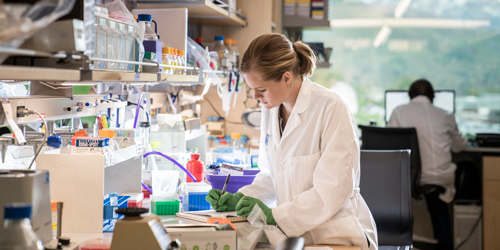Nonclinical toxicology studies or preclinical toxicology studies are a set of bioanalyses that evaluate potential drug candidates’ toxicokinetics before human studies. Nonclinical studies also help form the profiles of new formulations, new indications, and new routes of existing drug products. Depending on the exposure duration, nonclinical studies may be acute, subchronic, and chronic.
Nonclinical studies comprise in vivo tests for materials that may present a substantial health risk via exposure to environmental factors. In general, preclinical toxicology studies do not conform to GLP specifications. However, for direct reference to human safety, nonclinical studies should be performed according to GLP specifications. Let us now focus on the different aspects of preclinical toxicology studies and how labs perform them.
How are nonclinical toxicology studies performed?
The primary goal of nonclinical toxicology studies is to evaluate the toxic effects’
- initiation
- severity
- duration
- dose-dependency profile
- irreversibility degree of a drug product
Let us look at the steps for nonclinical toxicology studies:
- The first step is to decide the dosage regimen, whether to use a single or repeated dose for the study.
- The second step is to explore the routes of exposure. They may include oral, intraperitoneal, intramuscular, intravenous, topical, subcutaneous.
- The third step concerns the study species. The study species could be a single species or may require multiple species such as mice, rats, hamsters, rabbits, etc.
Once analysts decide the dosage, route, and species, toxicokinetic assays come next. Toxicokinetic parameters are conducted in nonclinical toxicology studies and are GLP-complaint. They help measure systemic drug exposure and build a bridge between the dosage regimen and in the course duration of a drug substance. Toxicokinetic studies also establish the extent to which a drug gets accumulated in the body. Thus, the obtained data will form the basis of toxicological interpretation for its consideration as safety parameters in a clinical trial.
Toxicokinetic parameters can be conducted by:
- Following a full protocol answering all the required questions
- A partially reduced protocol, which only focuses on the main questions that are adequate for verifying the toxicological data
A full protocol comprises collecting all other biological matrices besides blood, such as feces, urine, muscles, fat, skin, and possible target organs. With volatile compounds, include additional animal groups in the study protocol. Ideally, the design and experimental protocol of preclinical toxicology studies are based on a case-to-case scenario, incorporating all the essential parameters that facilitate enough data collection for a drug candidate’s risk and safety assessment.
The way ahead
Unreliable and unreproducible nonclinical ind studies are primarily the limiting factors posing a hindrance in the development of new drug products. Hence, for successful use in the drug development process, it is important to supplement the preclinical toxicology studies with:
- Blind experiment execution
- Well-designed study protocol
- Reproducible study data
- Effective statistical analysis for its successful use in the drug development process.
Nevertheless, nonclinical toxicology studies should employ GLP and good scientific practices to ensure the reproducibility, quality, and reliability of the generated study data and its use in early preclinical drug assessments.



